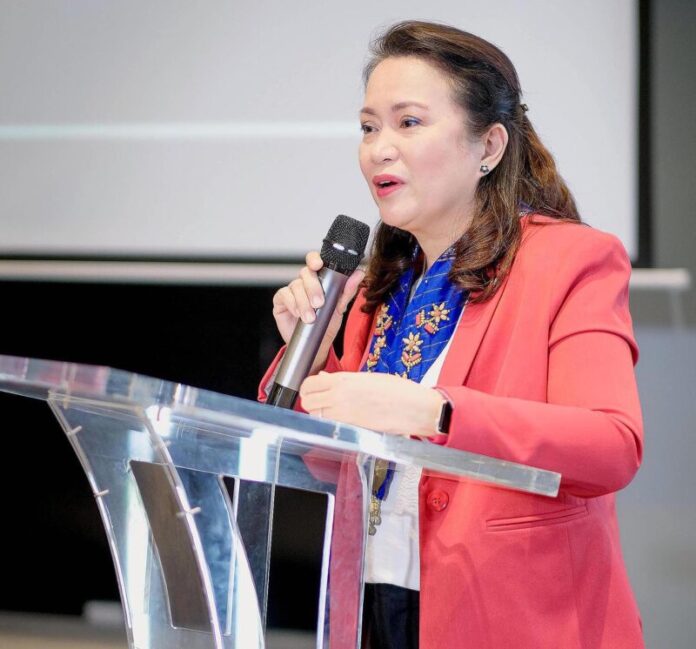
-
Mindanao Development Authority is seeking funds for its multimodal logistical transport map for the southern island that will include air, sea, land and internet connectivity
-
MinDA Secretary Ma. Belen Acosta says the masterplan will help Mindanao map out its development for the next 10 to 30 years
-
MinDA is planning to tap ADB, JICA or other funding agencies for financial aid to pursue the masterplan
Mindanao Development Authority (MinDA) is seeking funding for its multimodal logistical transport map for the southern island that would include airports, seaports, overland and internet connectivity.
This was disclosed by MinDa Chairperson Secretary Maria Belen Acosta in her keynote address at the Mindanao leg of the recent PortCalls Visayas and Mindanao Shipping Conference in Davao City.
“We will need that masterplan so that our development will be planned for 10, 20, 30 years, beyond the terms of our political leaders. That is to ensure that …the plan moves on without hurdle,” Acosta said.
She said the fund for the project could come from the Asian Development Bank, the Japan International Cooperation Fund or another funding agency, “but that is the way forward for our multimodal transport and logistical masterplan.”
In her speech, the MinDA official hailed Mindanao’s primordial role as a maritime hub in Southeast Asia whose economy relies heavily on sea connectivity.
“With the region’s archipelagic setup, the seas have always played a crucial role during the ‘age of commerce,’ which saw the influx of pre-colonial trade between the maritime Borneo and the borders of Mindanao with its major markets in East Asia and the West,” Acosta said.
She pointed out that the jargon “backdoor” outsiders use to refer to Mindanao is resented by those from the Basuta (Basilan, Sulu, Tawi-tawi) area as historically wrong, as their region was, in fact, a hub for Chinese and Malay traders, and a center of government in the pre-Spanish era.
“Let’s not treat BIMP-EAGA (Brunei, Indonesia, Malaysia, Philippines-East Asia Growth Area) as a backdoor, it should be regarded as a major commercial area, especially in the shipping and maritime industry,” Acosta said.
She described the age-old barter trading practiced by people in border areas of Malaysia, Indonesia and the Philippines that made use of traditional inter-island shipping routes.
These routes had been an entry point not only for economic activities, but also fostered strong cultural ties between the country and its BIMP-EAGA neighbors, Acosta said.
“Even at the present time, we see traces of similarities in language, known to come from our common Austronesian origins,” she said.
MinDA is helping the Bangsamoro region in reviving the system. But, unlike how barter trade had been treated as informal in the olden days, MinDA is now assisting BARMM in putting in place a framework for barter trade by crafting the Implementing Rules and Regulations for Barter Trade.
MinDA is also working on operational guidelines of barter trade that both the Bangsamoro region and the national agencies can use, Acosta said.
In her speech, Acosta said that through the BIMP-EAGA sub-regional cooperation mechanism and the proactive participation of the private sector, she hopes the Mindanao barter trade will be institutionalized as a major key economic driver in the sub-region.
“In the lens of BIMP-EAGA Connectivity Agenda, the BIMP-EAGA cooperation fully recognizes the advantages embedded in the sub-regional strategies and puts connectivity as the cornerstone of its development,” she said.
The MinDA official said the BIMP-EAGA Vision (BEV) 2025 emphasized that an efficient, secure and integrated transport network is vital to optimizing economic integration and encouraging trade within the region. She said development of critical infrastructure is needed to “to complete missing links” within the sub-region’s priority economic corridors.
Acosta said this is likewise reflective of the Master Plan on ASEAN Connectivity that identified ports in Davao and General Santos as strategic gateways that will connect and facilitate seamless trading with Indonesia, the rest of the ASEAN and beyond.
She said that supporting that vision are BIMP-EAGA’s policy measures, such as the (i) BIMP-EAGA Travel Tax Exemption for Travelers Departing Mindanao and Palawan Air/Seaports and (ii) 50% Reduction on Port Tariffs extended to BIMP-EAGA Shipping Operators.
“These incentives are based on the existing agreements under BIMP-EAGA, which shows the country’s commitment in delivering the objectives of the sub-region under the transport sector,” Acosta said.
She said that in all of these concerted efforts, MinDA and its strategic stakeholders and collaborators in Mindanao and the sub-region recognize the private sector’s crucial role in advancing and sustaining MinDA’s transport connectivity initiatives, with the end goal of pursuing seamless movement of goods and services, sea linkages and enhanced people-to-people connectivity.




